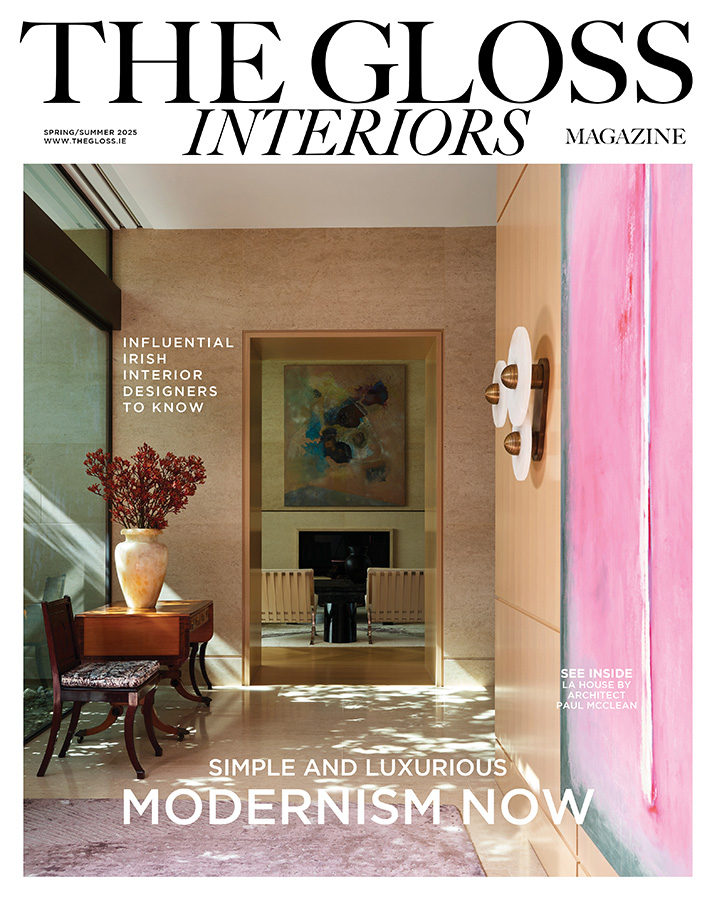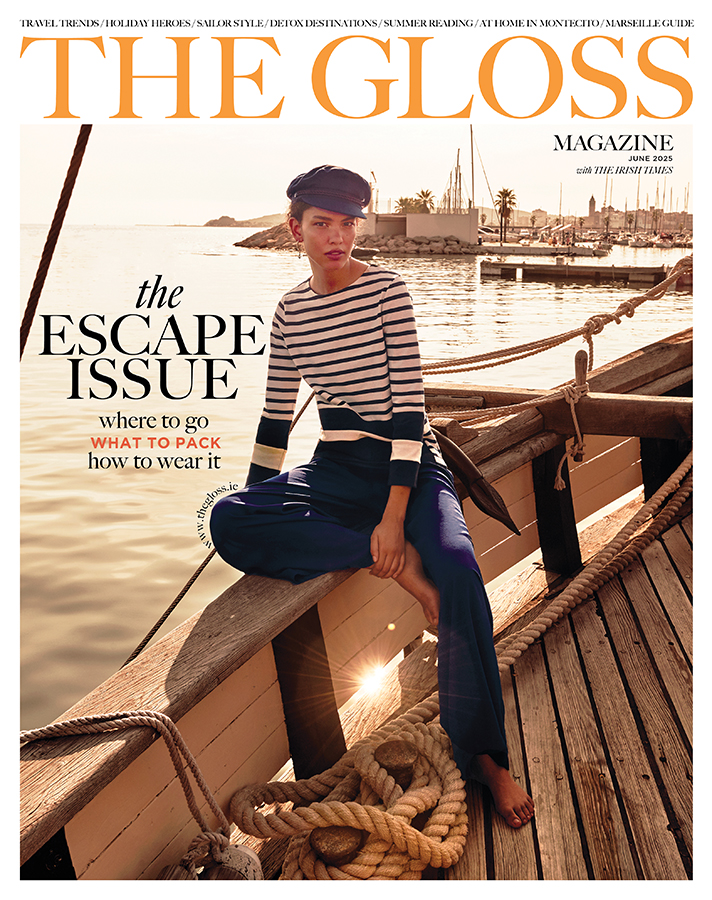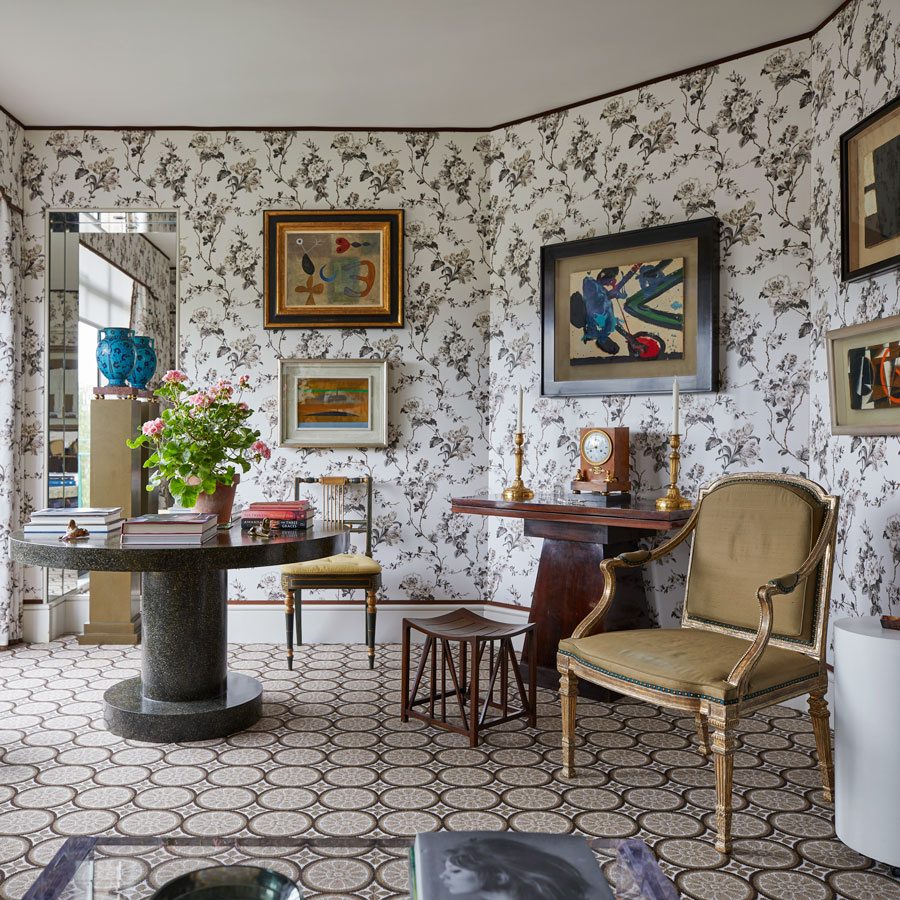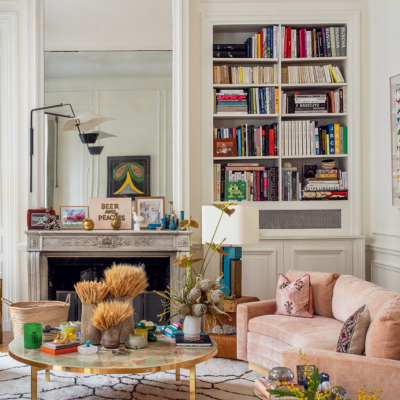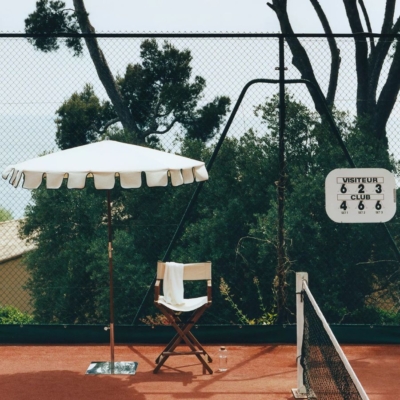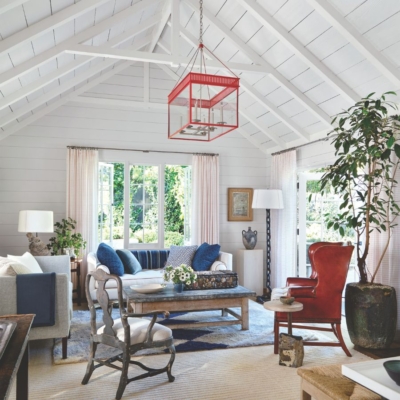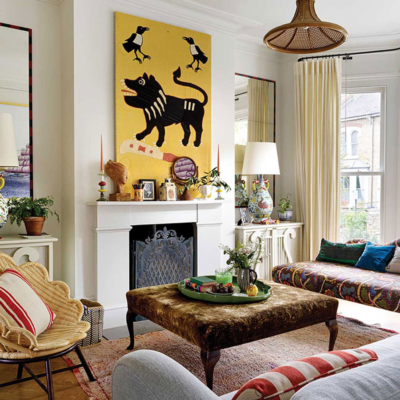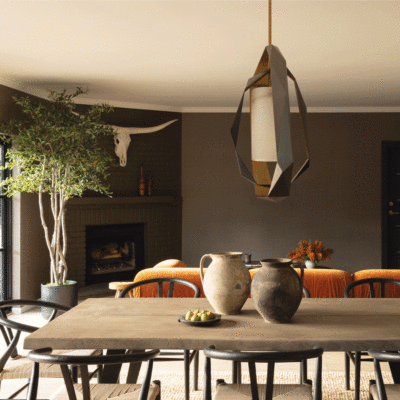As Veere Grenney explains, his London apartment epitomises his life as a designer and his love of art, fabrics and colour …
The first thing you see when you step into my apartment in Chesil Court, Chelsea, is a terracotta statue on a floating marble shelf in the hallway. Over the years, art, unusual objects and exceptional furniture have come and gone in my life and I find myself increasingly attached to very little. However, there are just a few things that I cannot bear to part with and this is one of them. I bought the statue in the 1970s and suspect it is late 19th century English, made in the expressive manner of Lord Leighton. It could be many things, a shrouded Islamic lady, a nun or an Arts and Crafts woman. Both humble and earthy, it is also suggestive of something transcendental and speaks deeply to me. Struck into stillness, it is a quiet reminder of the spiritual influences that inform my own life.
Above the statue is my Craigie Aitchison painting of a Bedlington terrier, crucifix, Holy Island and a boat. In luminous colour the artist conveys poignancy, God, and the impossible mystery of life. His colour, his emotion and his complete integrity all issue from the heart. Here is my spiritual life condensed into a small space. This apartment in Chesil Court epitomises my life as a designer. It is a distilled essence of my greatest influences, with its strong echoes of Billy Baldwin, David Hicks, and Nancy Lancaster, its notes of Egypt and my favourite art, fabrics and colours.
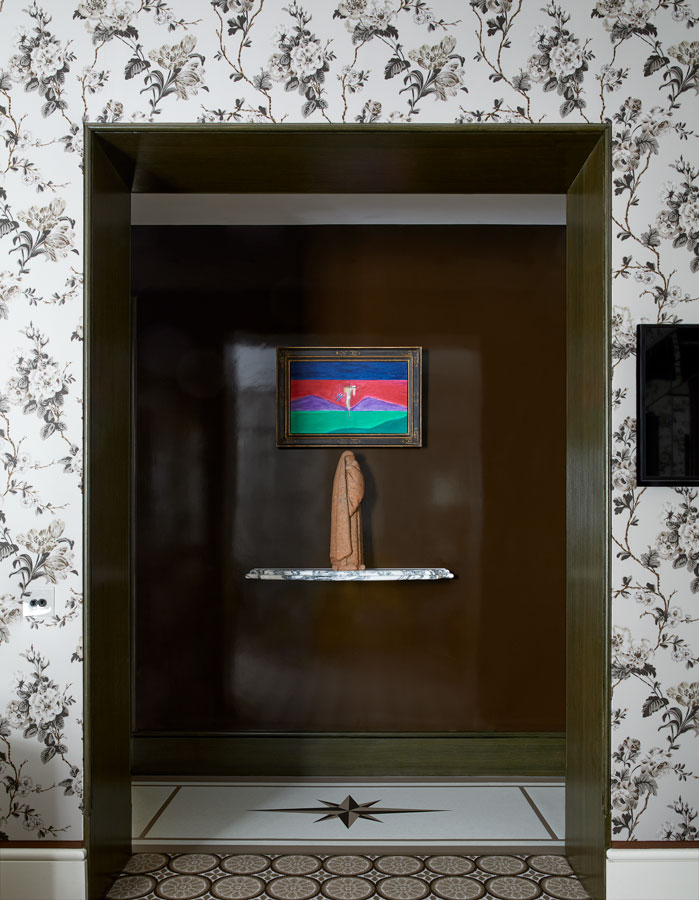
Chesil Court had been braided into my history, long before I bought this apartment. When I first came to London, I had been initially drawn to Notting Hill and was based there from 1973 to 2003. My office was in Chelsea from the 1980s, but West London was my home. I had an old friend from my childhood in New Zealand, Keith Lichtenstein, who was close to David Hicks and who owned the coolest restaurant in the King’s Road, the Casserole. Keith was an avid collector, buying Bacons and Gluck and Mackintosh furniture. He lived in a tiny, glamorous flat in Chelsea, in a block called Chesil Court. Constructed in the late 1930s by the London Power Board, this was a state-of-the art building, the first ever block to have fully heated ceilings, which in turn became heated floors. There are just four lifts that serve two flats on each floor. The building features both Georgian windows and steel – Crittal – windows leading onto the balconies. I particularly love that mix of my two favourite styles, and in the back of my mind I always had the idea that, if I was not living in a house, I would be a resident of Chesil Court. It would be the most perfect pied-à-terre. Then, in 2021, I managed to buy this flat on the sixth floor. It has phenomenal views, looking south to the river in one direction and right over West London in the other. I live in Tangier for most of the year, but when I am in London this place is ideal for my Chelsea office; I can walk to work and back each day. I can be here for the theatre, opera, work and friends. It is like living in the Carlyle Hotel in New York.
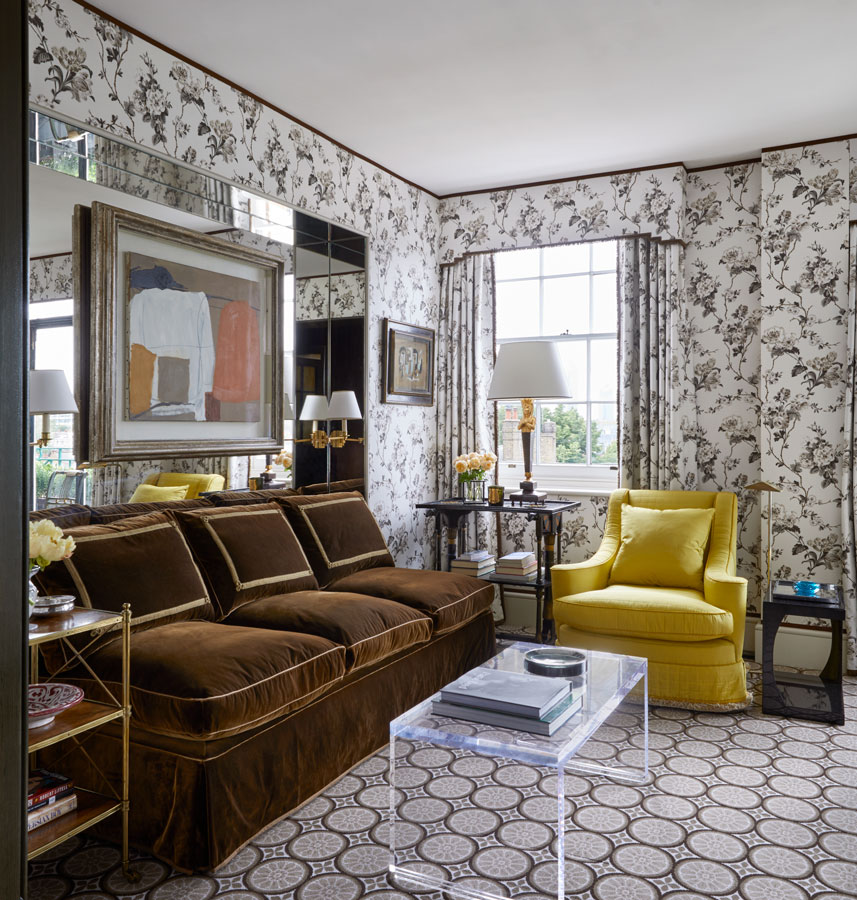
I designed the sofa to be like a Maison Jansen piece – sumptuous, grand and faintly louche – in brown silk velvet. Chocolate brown is warm and sophisticated as a shade and works beautifully with yellow, pink, blue – everything, really. It is the colour of the earth and therefore very versatile. The geometric carpet is a reinterpretation of a David Hicks original, the chintz is a Veere Grenney design for Schumacher.
The two gifts when I bought the flat were that the building – remarkably – is not listed. The previous owner had knocked all the walls down; so in effect, I was buying a completely open space. These flats are not designed to be big empty studios, so I reinstated three principal rooms, including a sitting room with a balcony that has the most wonderful vista over West London and a bedroom which directly faces Albert Bridge. There would be a perfectly urban kitchen – the antithesis of homely – and the most cosmopolitan of marble bathrooms. Crucially, I created big cupboards. Loving the idea of designing the tiniest, grandest hall in London, I installed inlaid linoleum squares with a star in the middle. Linoleum, which periodically drops in and out of fashion, was the dream solution here: it is practical, warm to walk on and particularly good for sound insulation.
The sofa here is intended to be a little louche. I designed it to be like a Maison Jansen piece in brown silk velvet and it possesses a touch of what I call, Duchess of Windsor style. Above it, hangs a serene abstract painting by Roger Hilton, an artist who is always a touchstone for me. The yellow armchair is essential to the room. Yellow always works in a charming and sophisticated way to add a note of vitality to a space. But perhaps the most important object, and definitely the most personal, is the cerulean-blue vase that once belonged to Cecil Beaton and which has featured in all his homes. I fell in love with it at the 1980 sale held at his home, Reddish House in Broad Chalke, Wiltshire, after he died.
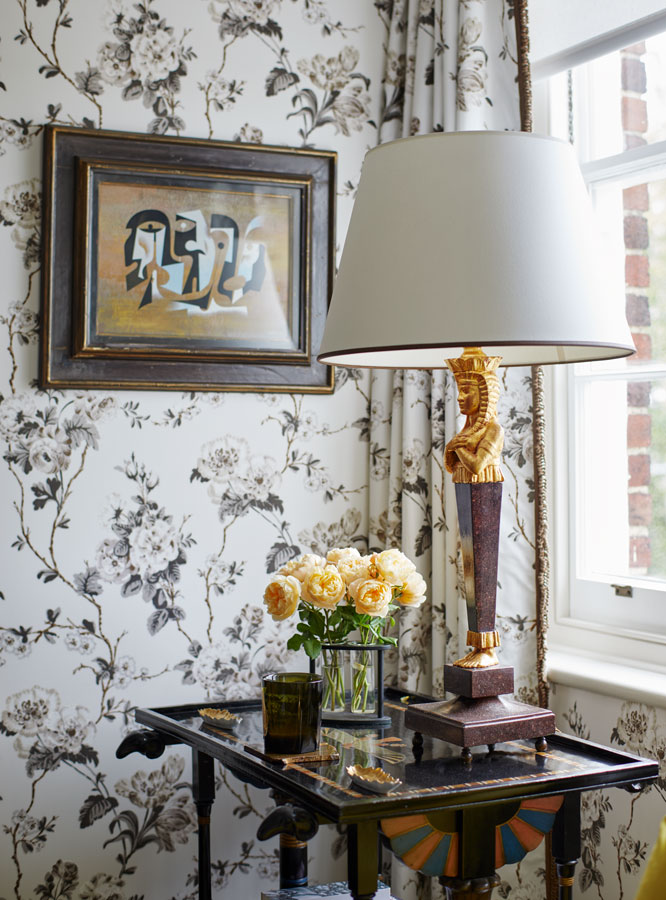
Some of my favourite design motifs come together in the sitting room; a yellow
armchair; a classic Thebes stool at an Egyptian-style table, which opens out to become a desk; a grand English chair adding elegance and finesse. The artwork includes paintings by Scottish painter Alan Davie, John Wells, William Scott, Roger Hilton and other post-war St Ives artists. The view across the Thames is incomparable.
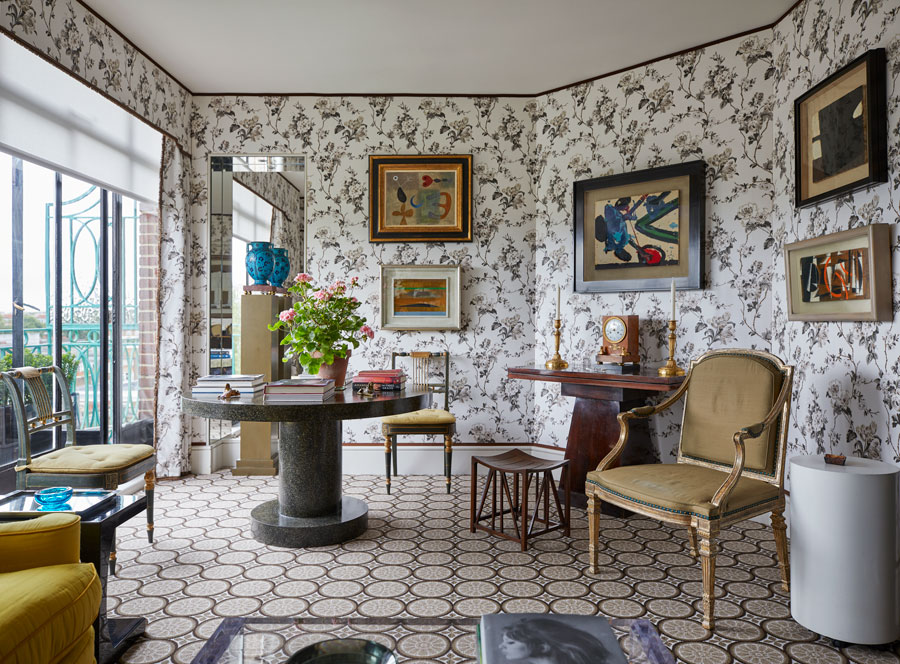
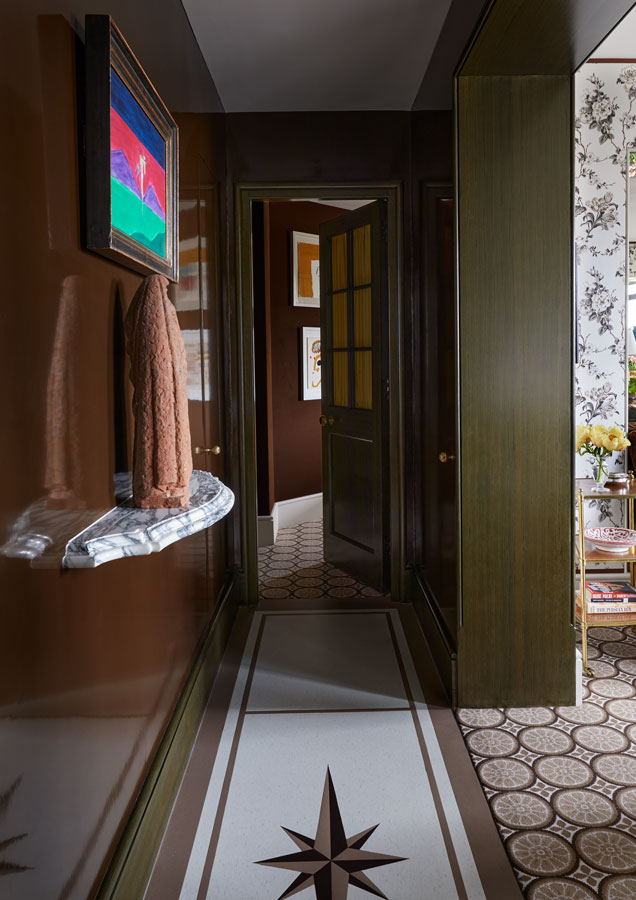
The finished floor is reminiscent of Michael Inchbald’s 1960s lino floors which are made to look like marble. The chocolate lacquer walls are something I adore and are a reference – or homage, really – to the legendary decorator Billy Baldwin and his phenomenally chic East Side studio with its high-gloss chocolate walls. However, creating hand-lacquered surfaces is a laborious process. Alistair Erskine, who has worked with me for many years, first beautifully skimmed the walls, then rubbed them with sandpaper over and over again until they were velvet-soft. Lastly, he applied many coats of lacquer. You achieve a greater depth with hand lacquering; it has a beautiful sheen to it but is less reflective. On the adjacent woodwork we created a fine stripe, with a black and brown combing effect. All the doors in the flat are half-glazed with a pleated plain-yellow cotton behind the glass, and the light bounces back and forth between the combed paint, the glossy walls and the glazed door.
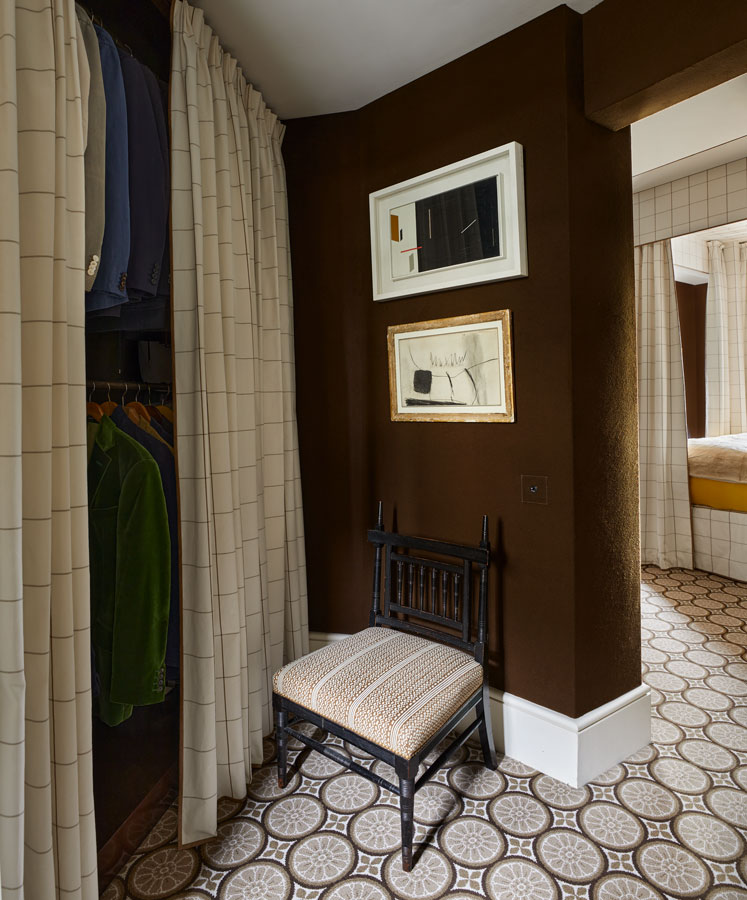
I designed the geometric carpet to be a reinterpretation of a David Hicks original. It is used in the sitting room and bedroom and coloured to chime perfectly with the chocolate brown in the hallway, the soft brown cashmere of the bedroom and the chintz on the sitting room walls. Created by Veere Grenney for Schumacher, the chintz is restrained and romantic, in pearl and grey, black and soft fawn.
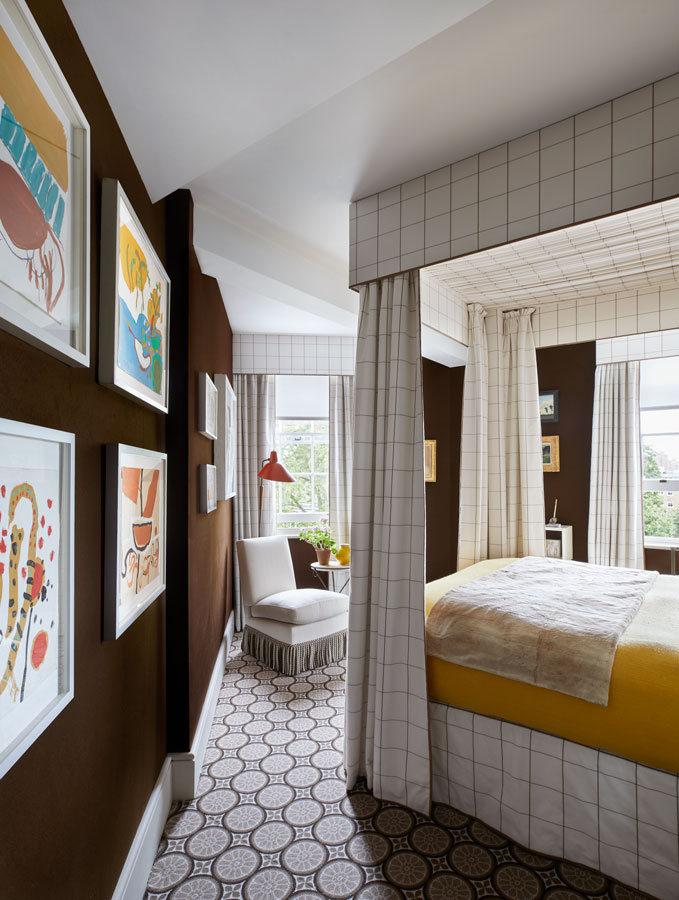
The geometric carpet continues into my bedroom, where it echoes a four-and-a-half-inch windowpane check fabric I designed for Schumacher. I had planned to line the walls with this cloth, but marrying the squares is difficult unless the room has perfect rectangular surfaces. Instead, I used it for the four-poster bed and the curtains. There is always a pelargonium, as at The Temple and Gazebo. On the bed is a touch of luxury, a sheared mink blanket which I love but which my lurcher loves even more. Roger Hilton gouaches add pops of strong colour. Through the bedroom is my dressing room with its impeccable little Arts and Crafts chair by Godwin.
I covered the walls in a brown cashmere to create a dry repeat of the more liquid shine of the chocolate-brown hallway. In all my schemes, I like the contrast, the friction, that comes from juxtaposing wet and dry, high and low. I put a lacquer finish next to a dry fabric or something completely matt, and I placed the esoteric, the refined or the glamorous adjacent to the plain and the modest. I then decided to hang six ultra-vivid Roger Hilton gouaches on the wall, and one of his charcoals covers the television. Very special to me is the painting by Catalan artist Ramiro Fernández Saus, in which a mouse sits patiently by an artist who is absorbed in the process of making art, recording a palm tree with what could be a pyramid beyond him. These components or apparent themes – the exotic, the Egyptian and the making of art in life – resonate deeply for me.
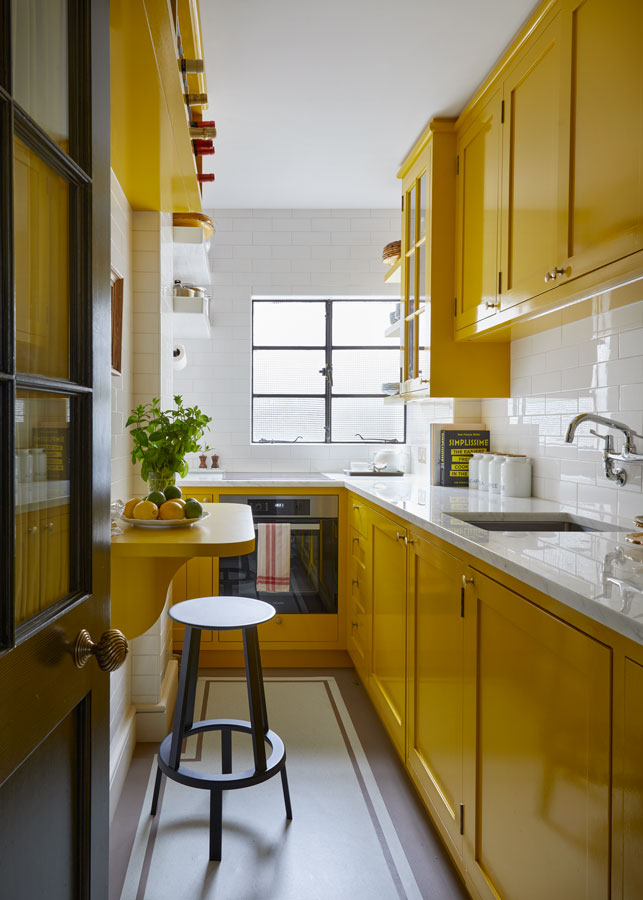
My yellow kitchen feels like a concentrated dose of pure joy. In general, I am not overly fond of kitchens. But this one is empty of any extraneous paraphernalia and is absolutely not domestic. It is painted in the high-gloss chrome yellow that I most love and glazed in white Victorian tiles. Quite simply, it is all light, all pleasure. It faces the courtyard and sitting here for coffee in the morning cannot fail to make you happy.
Finally, I have a gilded crucifix made by my sister, the artist Sarah Guppy, which has always hung by my bed, entirely simple, like a call to integrity. And there it is, complete. Small, super smart, sophisticated and functional, Chesil Court has a place for everything, including my dog. The chintz, the lacquer, the abstract art, the comfort, and the quiet notes of a spiritual life. My apartment is as much a complete expression of me as my other homes. Here in harmony are my loves, my beliefs, my greatest teachers and all I have learnt in this business of beauty.
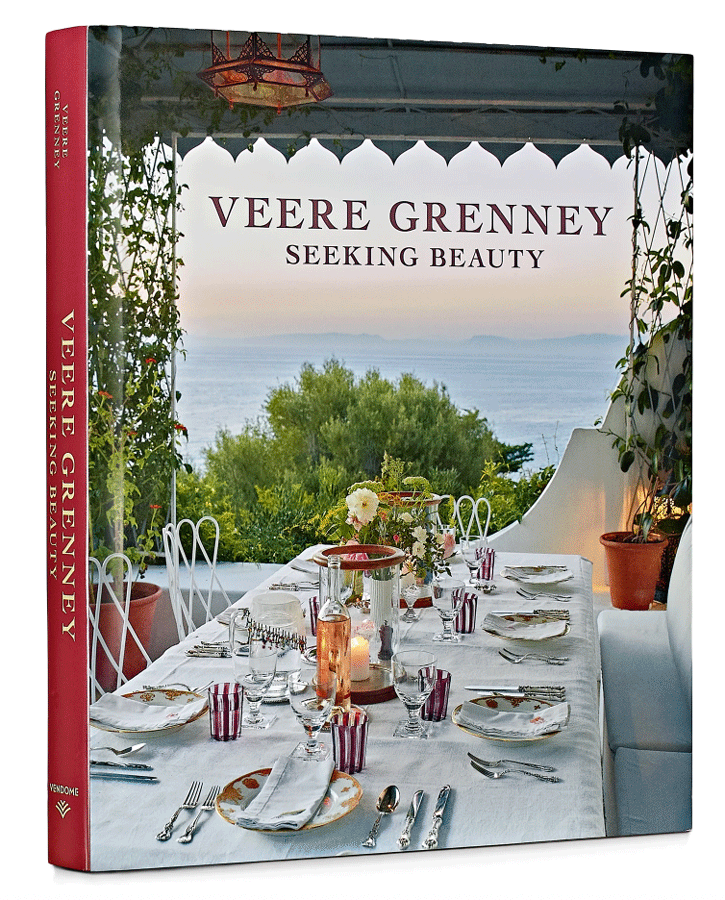
From: Veere Grenney: Seeking Beauty by Veere Grenney, photography by Francesco Lagnese, published by Vendome Press, €55.78.



